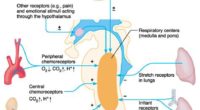five year plans in India
► 1-five-year plan (1951-56) – the priority of agriculture
► 2 five-year plan (1956-61) – industry area Priority
► 3 five-year plan (1961-66) – self reliance
► 4-five-year plan (1969-74) – poverty with justice, Removed evolution
► 5TH FIVE-year plan (1974-79) – poverty and self Removed dependency
► 6 five-year plan (1980-85)-same as the 5th plan Insisted
► 7TH FIVE-five-year plan (1985-90) – food production, employment, Productivity
► 8TH FIVE-year plan (1992-97) – employment creation, population Control of control
► 9TH FIVE-year plan (1997-02)-7 per cent growth Rate
► 10th five-year plan (2002-07) – self employment and Resources and development
► 11th five-year plan (2007-12) – wide and faster Development
► 12th five-year plan (2012-17) – Health, education and education Hygiene
First Five Year Plan (1951-56):
1. This plan was based on the Harrod-Domar model.
2. This plan emphasized towards improvement in agriculture productions, irrigation, price stability, power and transport.
3. This plan proved a success as agriculture production increased dramatically.
4. Major dam projects of Bhakra-Nangal, Hirakud and Mettur dam were started during this plan period.
5. By the end of this plan period, in 1956, five Indian Institutes of Technology (IIT) were also started.
6. Community Development Projects was started.
Second Five Year Plan (1956-61):
1. This plan followed the Mahalanobis model, an economic development model.
2. This plan paid major emphasis to domestic production of industrial products and rapid industrialisation.
3. Steel plants at Bhilai, Durgapur, and Rourkela were established during this plan.
4. The target growth rate of this plan was *4.5%* and the actual growth rate was *4.27%*.
Third Five Year Plan (1961-66):
1. The third Five-year Plan stressed growth in agriculture and industry.
2. The plan aimed to increase national income by 30% and agriculture production by 30%.
3. India failed to achieve its target due to wars with China in 1962 and Pakistan in 1965 and bad monsoon.
4. The target growth rate of this plan was 5.6%, but the actual growth rate was 2.4%.
Three Annual Plan (1966-69):
1. Due to miserable failure of third plan the government was forced to declare “plan holidays” (from 1966–67, 1967–68,& 1968–69).
2. Three annual plans were drawn during this period.
3. Equal priority was given to agriculture, its allied activities, and industrial sector.
Fourth Five Year Plan (1969-74):
1. This plan emphasized towards agriculture growth and Green Revolution in India advanced agriculture production.
2. 14 major Indian banks were nationalised.
3. The target growth rate was 5.6%, but the actual growth rate was 3.3%.
4. India conducted nuclear test in 1974.
Fifth Five Year Plan (1974-78):
1. This Five-year Plan laid stress on employment, checking inflation, poverty alleviation (Garabi Hatao), and justice.
2. The plan also focused on self-reliance in agricultural production and defence.
3. The Indian national highway system was introduced.
4. ‘Minimum Needs Programme’ was launched.
5. When Janta Party Government came to power it terminated the plan in the fourth year itself i.e. 1978.
6. The target growth rate was 4.4% and the actual growth rate was 5.0%
Rolling Plan (1978-80):
The Janata Party government rejected the fifth five year plan and introduced a new Sixth five year plan (1978-1983). This plan was again
rejected by the Indian National Congress government when it came to power in 1980 and a new sixth plan was made. The earlier one was
subsequently referred to as a rolling plan. Rolling plan concept was coined by Gunnar Myrdal.
Sixth Five Year Plan (1980-85):
1. This Five-year plan marked the beginning of economic liberalisation.
2. This plan focused equally on infrastructure and agriculture.
3. The sixth Five-year plan was a great success to Indian economy. The target growth rate was 5.2% and the actual growth rate was 5.4%.
Seventh Five Year Plan (1985-90):
1. This Five-year Plan aim to increase economic productivity, production of food grains, and generating employment.
2. Jawahar Rozgar Yojana was launched in 1989.
3. The plan was very successful. The target growth rate was *5.0%* and the actual growth rate was *6.01%*.
Period (1989-91):
1. No five year plan was implemented during this period due to political instability.
2. Only annual plans were made for the period between 1990 and 1992.
3. In 1991, India faced a crisis in Foreign Exchange (Forex) reserves, left with reserves of only about US$1 billion. At that time Dr. Manmohan Singh launched India’s free market reforms that brought the nearly bankrupt nation back from the edge. It was the beginning of privatisation and liberalisation in India.
Eight Five Year Plan (1992-97):
1. The eighth fiver year plan aimed towards modernization of industries.
2. The main objectives of this plan were controlling population growth, poverty reduction, employment generation, strengthening the infrastructure etc.
3. The target growth rate was 5.6% and the actual growth rate was 6.8%.
Ninth Five Year Plan (1997-2002):
1. This fiver year plan gave priority to agriculture and rural development with a view to generating adequate productive employment and eradication of poverty.
2. Accelerating the growth rate of the economy with stable prices.
3. Ensuring food and nutritional security for all
4. Containing the growth rate of population
5. The target growth rate was 6.5% and the actual growth rate was 5.4%.
Tenth Five Year Plan (2002-07):
1. This five year plan aim to achieve 8 per cent average GDP growth for the period 2002-07.
2. Creation of 50 million employment opportunities in the next 5 years.
3. Reduction in gender gaps in literacy and wage rates by at least 50% by 2007.
4. Reduction of poverty rate by 5 percentage points by 2007.
5. 20-point program was introduced.
6. The target growth rate was 8.1% and the actual growth rate was 7.3%.
Eleventh Five Year Plan (2007-12):
1. Accelerate growth rate of GDP from 8% to 10% and then maintain at 10% in the 12th Plan in order to double per capita income by 2016 – 17.
2. Rajiv Aarogyasri Health Scheme was launched.
3. Create 70 million new work opportunities.
4. Reduce educated unemployment to below *5%*.
5. Increase forest and tree cover by 5 percentage points.
6. Raise the sex ratio for age group 0 – 6 to 935 by 2011 – 12 and to 950 by 2016 – 17.
Twelfth Five Year Plan (2012-17):
1. This five year plan aim to achieve 8.2% growth.
2. Achieve 4 percent growth in agriculture.
3. Reduce poverty by 10 percentage points, by 2017.
4. Health, education and skill development, environment and natural resources and infrastructure development are the main focus area of this plan.


